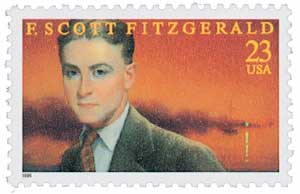
# 3184b FDC - 1998 32c Celebrate the Century - 1920s: Gatsby Style
32¢ The Gatsby Style
Celebrate the Century – 1910s
City: Washington, DC
Quantity: 12,533,000
Printed By: Ashton-Potter (USA) Ltd
Printing Method: Lithographed
Perforations: 11.5
Color: Multicolored
Happy Birthday F. Scott Fitzgerald
Fitzgerald was named after his second cousin three times removed on his father’s side, Francis Scott Key, author of “The Star-Spangled Banner.” Two years after he was born, Fitzgerald’s family moved to Buffalo, New York, where his father worked at Proctor & Gamble. He also spent a short time in Syracuse, New York.
From an early age, Fitzgerald showed a high intellect and interest in literature. After returning to Minnesota, he saw his first work get published, a detective story in the school newspaper. His parents then sent him to prep school in New Jersey, which led to him attending Princeton University. There, Fitzgerald wrote for a theater group as well as the school magazine. During this time he also submitted his first book to a publisher. While the editor praised his writing, he eventually rejected the book.
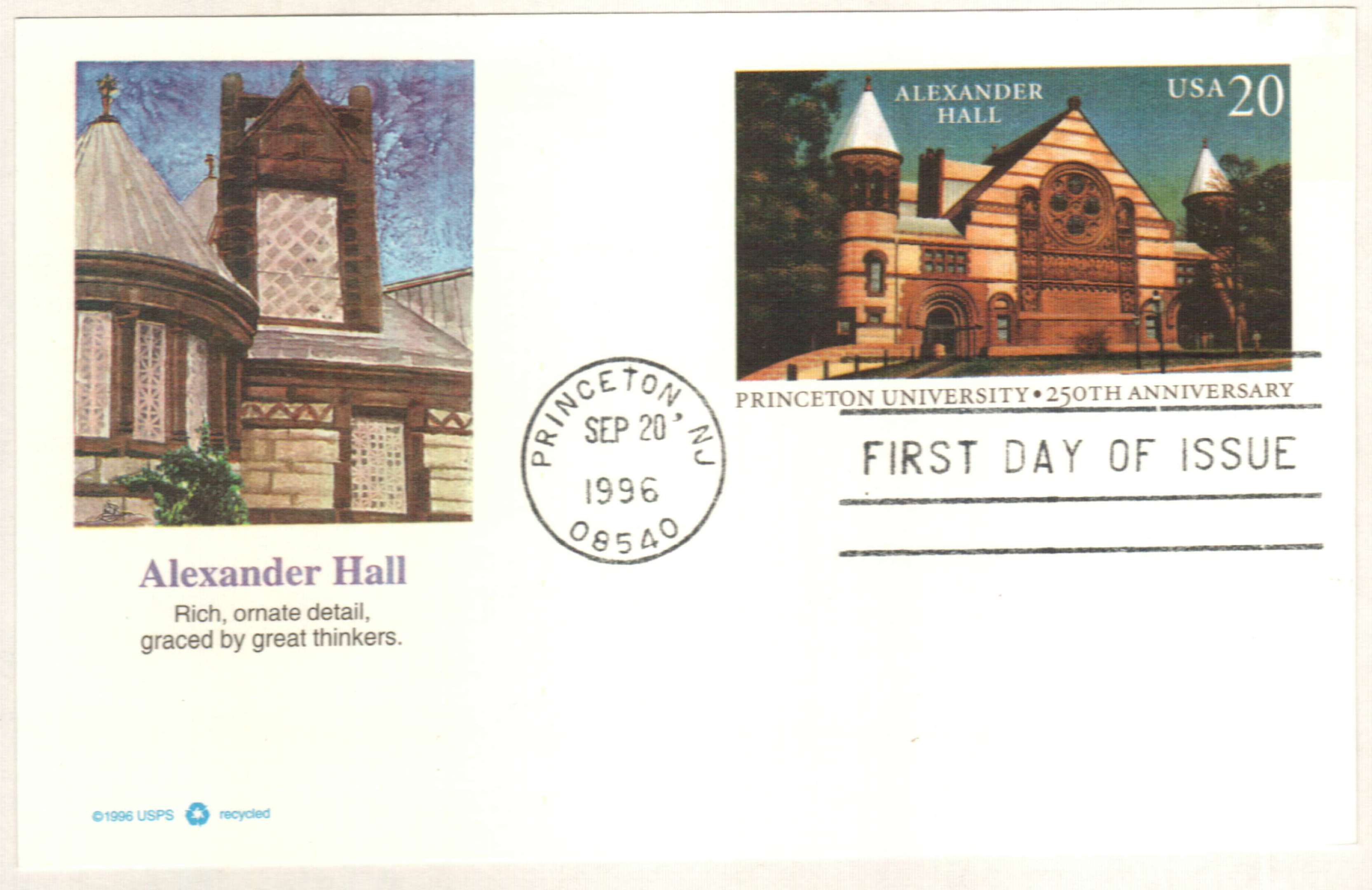
Though he was bright, Fitzgerald’s writing distracted him from his studies, leading him to be placed on probation. He left school and joined the Army in 1917. He feared he might die fighting in The Great War, so he hastily wrote The Romantic Egoist just weeks before reporting for duty. Though Scribner’s turned it down, they suggested he send them more work. It was also during this time, on a visit back home to St. Paul, that Fitzgerald first met socialite Ginevra King. Fitzgerald was immediately drawn to her and she served as the model for a number of his later characters, including Isabelle Borgé, in This Side of Paradise and Daisy in The Great Gatsby.

Fitzgerald was then commissioned a second lieutenant in the infantry and assigned to Camp Sheridan in Alabama. It was there that he met his future wife, Zelda. Fitzgerald was never deployed to Europe, and when the war ended he moved to New York City to pursue a career in advertising. He found a job with the Barron Collier agency and wrote short stories in his down time. He also revised his previous book, The Romantic Egoist and retitled it This Side of Paradise, inspired by his years at Princeton. Scribner’s then accepted his new book and published it in 1920 to instant success.
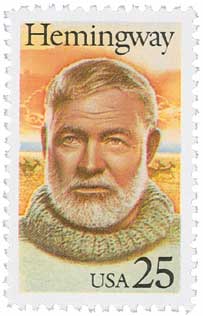
Fitzgerald’s literary success proved to Zelda that he could support her and she agreed to marry him. The couple lived an opulent life style, which provided fodder for Fitzgerald’s writing. They spent a good deal of time in Paris and other parts of Europe, befriending American expatriates – most notably, Ernest Hemingway.
While novels were Fitzgerald’s love, he often wrote short stories for magazines for quick money to support their lifestyle. His work appeared in The Saturday Evening Post, Collier’s Weekly, and Esquire. He also sold his stories to Hollywood, which Hemingway frowned upon. As Fitzgerald described it, he would write his stories as he believed they should be, and then rewrite them with “twists that made them into salable magazine stories.”
In between writing these short stories, Fitzgerald wrote his novels. His second novel, The Beautiful and the Damned was published in 1922 and The Great Gatsby in 1925. Gatsby wasn’t as popular at its release as it would be in later years, eventually considered by many to be Fitzgerald’s masterpiece.
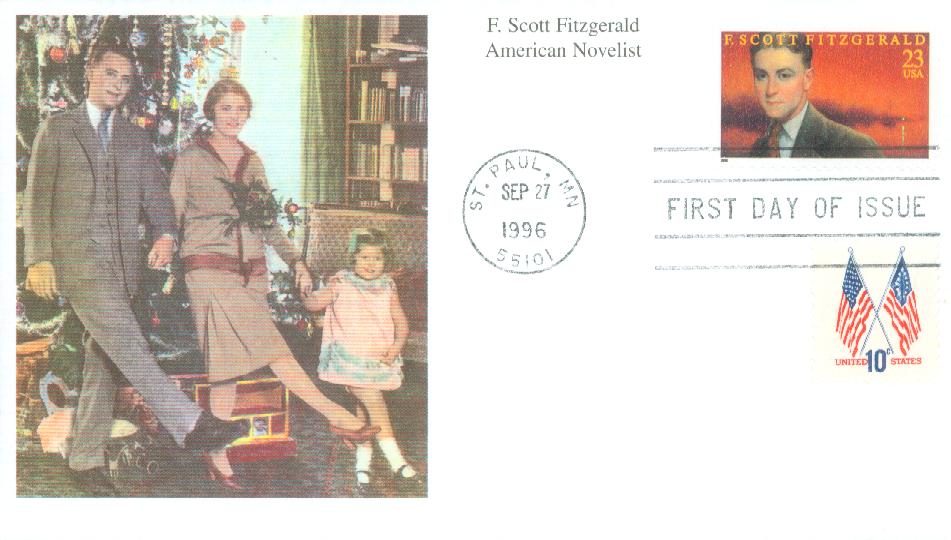
In the coming years, Fitzgerald moved to Hollywood twice. After publishing Tender is the Night in 1934, he signed an exclusive contract with MGM studios. He worked on an unused draft of Gone with the Wind and revisions of Madam Curie. During his Hollywood tenure he also wrote his fifth and final novel The Last Tycoon, which was published posthumously.
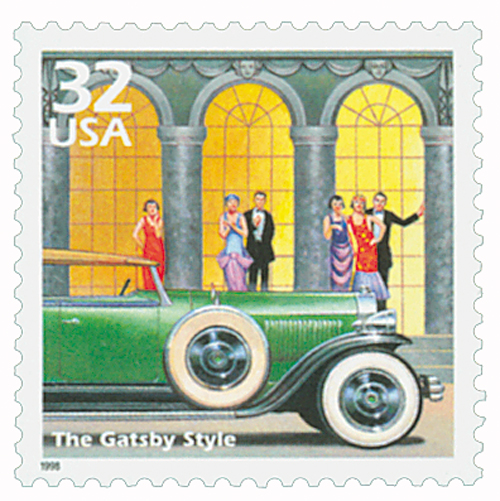
Years of heavy drinking took their toll on Fitzgerald’s health, ultimately leading to his death on December 21, 1940. Fitzgerald’s writing inspired a number of other writers, including T.S. Eliot and J.D. Salinger. The Great Gatsby continues to be a best seller and is required reading in countless schools across the country. In 2015, a Fitzgerald’s long-lost short story “Temperature” was discovered and published.
32¢ The Gatsby Style
Celebrate the Century – 1910s
City: Washington, DC
Quantity: 12,533,000
Printed By: Ashton-Potter (USA) Ltd
Printing Method: Lithographed
Perforations: 11.5
Color: Multicolored
Happy Birthday F. Scott Fitzgerald
Fitzgerald was named after his second cousin three times removed on his father’s side, Francis Scott Key, author of “The Star-Spangled Banner.” Two years after he was born, Fitzgerald’s family moved to Buffalo, New York, where his father worked at Proctor & Gamble. He also spent a short time in Syracuse, New York.
From an early age, Fitzgerald showed a high intellect and interest in literature. After returning to Minnesota, he saw his first work get published, a detective story in the school newspaper. His parents then sent him to prep school in New Jersey, which led to him attending Princeton University. There, Fitzgerald wrote for a theater group as well as the school magazine. During this time he also submitted his first book to a publisher. While the editor praised his writing, he eventually rejected the book.

Though he was bright, Fitzgerald’s writing distracted him from his studies, leading him to be placed on probation. He left school and joined the Army in 1917. He feared he might die fighting in The Great War, so he hastily wrote The Romantic Egoist just weeks before reporting for duty. Though Scribner’s turned it down, they suggested he send them more work. It was also during this time, on a visit back home to St. Paul, that Fitzgerald first met socialite Ginevra King. Fitzgerald was immediately drawn to her and she served as the model for a number of his later characters, including Isabelle Borgé, in This Side of Paradise and Daisy in The Great Gatsby.

Fitzgerald was then commissioned a second lieutenant in the infantry and assigned to Camp Sheridan in Alabama. It was there that he met his future wife, Zelda. Fitzgerald was never deployed to Europe, and when the war ended he moved to New York City to pursue a career in advertising. He found a job with the Barron Collier agency and wrote short stories in his down time. He also revised his previous book, The Romantic Egoist and retitled it This Side of Paradise, inspired by his years at Princeton. Scribner’s then accepted his new book and published it in 1920 to instant success.

Fitzgerald’s literary success proved to Zelda that he could support her and she agreed to marry him. The couple lived an opulent life style, which provided fodder for Fitzgerald’s writing. They spent a good deal of time in Paris and other parts of Europe, befriending American expatriates – most notably, Ernest Hemingway.
While novels were Fitzgerald’s love, he often wrote short stories for magazines for quick money to support their lifestyle. His work appeared in The Saturday Evening Post, Collier’s Weekly, and Esquire. He also sold his stories to Hollywood, which Hemingway frowned upon. As Fitzgerald described it, he would write his stories as he believed they should be, and then rewrite them with “twists that made them into salable magazine stories.”
In between writing these short stories, Fitzgerald wrote his novels. His second novel, The Beautiful and the Damned was published in 1922 and The Great Gatsby in 1925. Gatsby wasn’t as popular at its release as it would be in later years, eventually considered by many to be Fitzgerald’s masterpiece.

In the coming years, Fitzgerald moved to Hollywood twice. After publishing Tender is the Night in 1934, he signed an exclusive contract with MGM studios. He worked on an unused draft of Gone with the Wind and revisions of Madam Curie. During his Hollywood tenure he also wrote his fifth and final novel The Last Tycoon, which was published posthumously.

Years of heavy drinking took their toll on Fitzgerald’s health, ultimately leading to his death on December 21, 1940. Fitzgerald’s writing inspired a number of other writers, including T.S. Eliot and J.D. Salinger. The Great Gatsby continues to be a best seller and is required reading in countless schools across the country. In 2015, a Fitzgerald’s long-lost short story “Temperature” was discovered and published.





